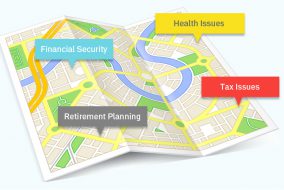At some point in life you will likely have an unplanned expense. You may have unexpected car repairs, need a new roof or need to take time off of work. Unforeseen events happen, and when they do, it’s important to be financially prepared.
Budgets are an effective way to plan your month-to-month expenses and savings. They can also help you put money aside for the unexpected.
Here are three steps to start building your emergency fund:
- Determine the amount you’d like to save. This could be any amount you feel would cover your expenses in the case of an emergency. A common goal is three to six months of expenses in the case of job loss.
- Once you’ve determined your goal, work your emergency fund savings into your monthly budget until you’ve hit your goal. If you’d like to save $5,000, for instance, you might want to stash away approximately $200 per month over two years.
- Determine where you’d like to save your emergency fund. It might be appealing to keep your money in investments that earn interest, but you should make sure the investment does not have penalties for making early withdrawals.
If you need help to plan your emergency fund or your savings strategy as a whole, a financial advisor can help guide you through the process.






















